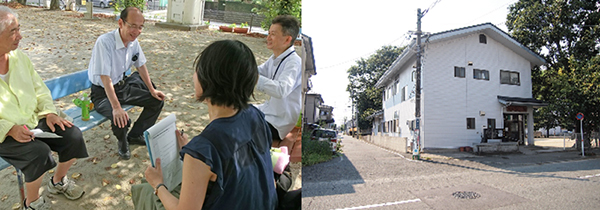japanese
Design of a small disaster prevention park in a dense residential district
-
In this old block, both the aging and the hollowing out of the population are progressing. The roads are narrow and emergency vehicles can not enter. In such disitrict, a block park is to be constructed for the purpose of reducing disaster risk.
In order to be fully utilized at the time of emergency, this park has to be made to be familiar with local people on a daily basis. It is necessary to think with them from the first phase of the design. Therefore, we first grasped their thoughts by a questionnaire survey. Then, we carried out a three-step cycle of presenting the draft ideas to them, collecting their opinions, and reflecting them on the next drafts.

Based on the results of the questionnaire survey and the field survey, 12 drafts (A-L) were produced with reference to the government guideline for disaster prevention parks and the result of park utilization survey during the Kumamoto earthquake. We presented the drafts at the first public hearing, and the perticipants voted for them.

We analyzed the tendency of voting for each draft, and made three drafts of the second phase (2A-2C). We presented the drafts at the second public hearing. The participants voted for them by writing comments on sticky notes and pasting them on the models.

Based on the results of the second meeting, the third phase model of the park was made. After collecting opinions at the third meeting, we made a final draft.

left:interview survey to the citizens about the situations of park utilization at the time of Kumamoto earthquake
right:an example of a block park with a community house utilized as a refuge shelter at the time of Kumamoto earthquake
This proposal is based on the experience of participating in a joint survey of park use in the 2016 Kumamoto earthquake. The block parks in Kumamoto city not only functioned as temporary evacuation sites, but also evacuation sites for certain periods of time such as in-vehicle nights and tent nights, places for cooking, distribution sites for water and relief supplies, installation locations for toilets, bases for collecting and dispatching information, and bases for disaster volunteer activities. They served as complements to the official shelters full of evacuees. This park is expected to play a similar role. It is necessary for the neighbors to be fully understood how to use this park and the facilities and to be used regularly.









